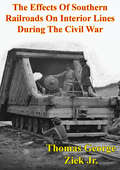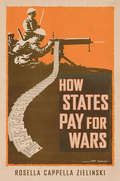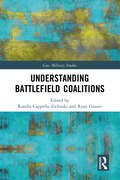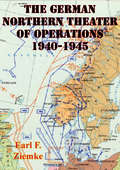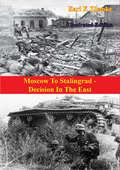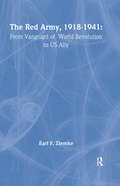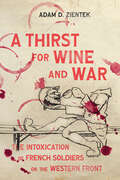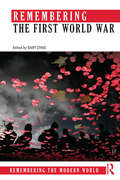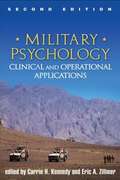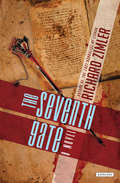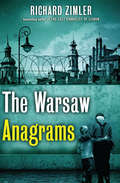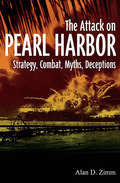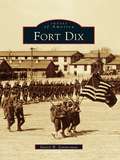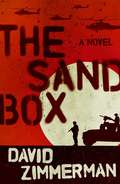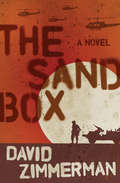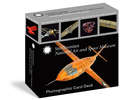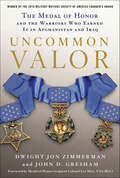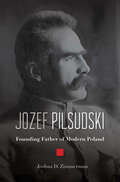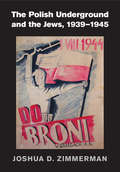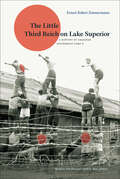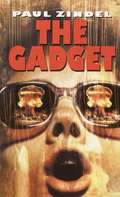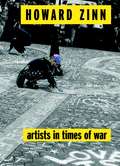- Table View
- List View
The Effects Of Southern Railroads On Interior Lines During The Civil War
by Thomas George Ziek Jr.The purpose of this paper is to study the effects of the Southern railroad system on interior lines during the Civil War and determine whether or not the South enjoyed the advantage of interior lines. The use of railroads during this conflict placed an enormous physical strain upon the limited industrial resources of the Confederacy, and a great strain upon the intellectual agility of the Confederate High Command. Based upon the evidence studied, and the time-space comparisons of both Northern and Southern railway operations, several conclusions can be drawn: the South entered the war with a rail system that was unable to meet the demands of modern war; the Confederate leadership understood the importance of the railroad and its importance to strategic operations early in the war, but were unwilling to adopt a course of action that best utilized their scarce assets; Southern railroad speeds decreased dramatically by 1863 due to the inability of Southern railroads owners to perform needed maintenance on their railroad equipment; tactical reverses on the field of battle, especially the losses of both Corinth in May of 1862 and Knoxville in September of 1863 increased the distances that re-enforcements would have to travel to fight a mobile intra-theater war; Union control, maintenance, and organization of its railway assets ensured that it would be able to move large numbers of troops at the strategic level efficiently from early 1863 to the end of the war. Based on these conclusions, the Confederacy lost the ability to shift troops on the strategic level more rapidly than the Union by 1863. This was a result of its physically weakened railroad system and military setbacks which caused Southern railroads to move forces over longer distances.
How States Pay for Wars
by Rosella Capella ZielinskiArmies fight battles, states fight wars. To focus solely on armies is to neglect the broader story of victory and defeat. Military power stems from an economic base, and without wealth, soldiers cannot be paid, weapons cannot be procured, and food cannot be bought. War finance is among the most consequential decisions any state makes: how a state finances a war affects not only its success on the battlefield but also its economic stability and its leadership tenure. In How States Pay for Wars, Rosella Cappella Zielinski clarifies several critical dynamics lying at the nexus of financial and military policy.Cappella Zielinski has built a custom database on war funding over the past two centuries, and she combines those data with qualitative analyses of Truman's financing of the Korean War, Johnson’s financing of the Vietnam War, British financing of World War II and the Crimean War, and Russian and Japanese financing of the Russo-Japanese War. She argues that leaders who attempt to maximize their power at home, and state power abroad, are in a constant balancing act as they try to win wars while remaining in office. As a result of political risks, they prefer war finance policies that meet the needs of the war effort within the constraints of the capacity of the state.
Understanding Battlefield Coalitions (Cass Military Studies)
by Rosella Cappella Zielinski Ryan GrauerThis book improves our understanding of battlefield coalitions, providing novel theoretical and empirical insight into their nature and capabilities, as well as the military and political consequences of their combat operations. The volume provides the first dataset of battlefield coalitions, uses primary sources to understand how non-state actors of varying types form such groupings, reports interviews with policymakers illuminating North Atlantic Treaty Organization operations, and uses cases studies of various wars waged throughout the nineteenth, twentieth, and twenty-first centuries to understand how other such collectives have operated. Part I introduces battlefield coalitions as an object of study, demonstrating how they are distinct from other wartime collectives. Using a novel dataset of actors fighting in 492 battles during interstate wars waged between 1900 and 2003, it provides, for the first time, a comprehensive portrait of the universe of battlefield coalitions. Part II explores processes and dynamics involved in the formation of battlefield coalitions, addressing how potential coalition members prepare for future battles in peacetime (as well as the consequences of such preparations) and the dynamics of mission design. Part III focuses on how battlefield coalitions are organised and fight when combat ensues, notably their decision-making rules and practices, command structures, and learning capacities. Part IV addresses three curious tendencies observed in the operations of battlefield coalitions: partners under-providing effort in combat, rebels and terrorist networks persisting in cooperation even when their interests diverge, and members defecting from the collective. Part V concludes with a chapter outlining for future researchers what we know about battlefield coalitions and what remains to be understood. This book will be of much interest to students of military and strategic studies, defence studies and International Relations.
Contested Commemorations
by Benjamin ZiemannThis innovative study of remembrance in Weimar Germany analyses how experiences and memories of the Great War were transformed along political lines after 1918. Examining the symbolism, language and performative power of public commemoration, Benjamin Ziemann reveals how individual recollections fed into the public narrative of the experience of war. Challenging conventional wisdom that nationalist narratives dominated commemoration, this book demonstrates that Social Democrat war veterans participated in the commemoration of the war at all levels: supporting the 'no more war' movement, mourning the fallen at war memorials and demanding a politics of international solidarity. It describes how the moderate Socialist Left related the legitimacy of the Republic to their experiences in the Imperial army and acknowledged the military defeat of 1918 as a moment of liberation. This is the first comprehensive analysis of war remembrances in post-war Germany and a radical reassessment of the democratic potential of the Weimar Republic.
German Northern Theater of Operations 1940-1945 [Illustrated Edition]
by Earl Ziemke[Includes 23 maps and 31 illustrations]This volume describes two campaigns that the Germans conducted in their Northern Theater of Operations. The first they launched, on 9 April 1940, against Denmark and Norway. The second they conducted out of Finland in partnership with the Finns against the Soviet Union. The latter campaign began on 22 June 1941 and ended in the winter of 1944-45 after the Finnish Government had sued for peace.The scene of these campaigns by the end of 1941 stretched from the North Sea to the Arctic Ocean and from Bergen on the west coast of Norway, to Petrozavodsk, the former capital of the Karelo-Finnish Soviet Socialist Republic. It faced east into the Soviet Union on a 700-mile-long front, and west on a 1,300-mile sea frontier. Hitler regarded this theater as the keystone of his empire, and, after 1941, maintained in it two armies totaling over a half million men.In spite of its vast area and the effort and worry which Hitler lavished on it, the Northern Theater throughout most of the war constituted something of a military backwater. The major operations which took place in the theater were overshadowed by events on other fronts, and public attention focused on the theaters in which the strategically decisive operations were expected to take place. Remoteness, German security measures, and the Russians' well-known penchant for secrecy combined to keep information concerning the Northern Theater down to a mere trickle, much of that inaccurate. Since the war, through official and private publications, a great deal more has become known. The present volume is based in the main on the greatest remaining source of unexploited information, the captured German military and naval records. In addition a number of the participants on the German side have very generously contributed from their personal knowledge and experience.
Moscow To Stalingrad - Decision In The East [Illustrated Edition] (The Russian Campaign of World War Two #1)
by Earl F. ZiemkeContains 92 illustrations and 45 maps of the Russian Campaign.A brilliant modern history of the German invasion of Russia to their bloody crushing defeat by the re-invigorated Russian forces at the siege of Stalingrad.During 1942, the Axis advance reached its high tide on all fronts and began to ebb. Nowhere was this more true than on the Eastern Front in the Soviet Union. After receiving a disastrous setback on the approaches to Moscow in the winter of 1941-1942, the German armies recovered sufficiently to embark on a sweeping summer offensive that carried them to the Volga River at Stalingrad and deep into the Caucasus Mountains. The Soviet armies suffered severe defeats in the spring and summer of 1942 but recovered to stop the German advances in October and encircle and begin the destruction of the German Sixth Army at Stalingrad in November and December. This volume describes the course of events from the Soviet December 1941 counteroffensive at Moscow to the Stalingrad offensive in late 1942 with particular attention to the interval from January through October 1942, which has been regarded as a hiatus between the two major battles but which in actuality constituted the period in which the German fortunes slid into irreversible decline and the Soviet forces acquired the means and capabilities that eventually brought them victory. These were the months of decision in the East.
The Red Army, 1918-1941: From Vanguard of World Revolution to America's Ally
by Earl F ZiemkeSupported in large part by evidence released after the collapse of the Soviet Union, this book follows the career of the Red Army from its birth in 1918 as the designated vanguard of world revolution to its affiliation in 1941 with 'the citadel of capitalism', the United States. Effectiveness of leadership and military doctrine are particular conce
Stalingrad To Berlin - The German Defeat In The East [Illustrated Edition] (The Russian Campaign of World War Two #2)
by Earl F. ZiemkeContains 72 illustrations and 42 maps of the Russian Campaign.After the disasters of the Stalingrad Campaign in the Russian winters of 1942-3, the German Wehrmacht was on the defensive under increasing Soviet pressure; this volume sets out to show how did the Russians manage to push the formerly all-conquering German soldiers back from Russian soil to the ruins of Berlin.Save for the introduction of nuclear weapons, the Soviet victory over Germany was the most fateful development of World War II. Both wrought changes and raised problems that have constantly preoccupied the world in the more than twenty years since the war ended. The purpose of this volume is to investigate one aspect of the Soviet victory-how the war was won on the battlefield. The author sought, in following the march of the Soviet and German armies from Stalingrad to Berlin, to depict the war as it was and to describe the manner in which the Soviet Union emerged as the predominant military power in Europe.
A Thirst for Wine and War: The Intoxication of French Soldiers on the Western Front (Intoxicating Histories)
by Adam D. ZientekBeginning in the fall of 1914, every French soldier on the Western Front received a daily ration of wine from the army. At first it was a modest quarter litre, but by 1917 it had increased to the equivalent of a full bottle each day. The wine ration was intended to sustain morale in the trenches, making the men more willing to endure suffering and boredom. The army also supplied soldiers with doses of distilled alcohol just before attacks to increase their ferocity and fearlessness. This strategic distribution of alcohol was a defining feature of French soldiers’ experiences of the war and amounted to an experimental policy of intoxicating soldiers for military ends.A Thirst for Wine and War explores the French army’s emotional and behavioural conditioning of soldiers through the distribution of a mind-altering drug that was later hailed as one of the army’s “fathers of victory.” The daily wine ration arose from an unexpected set of factors including the demoralization of trench warfare, the wine industry’s fear of losing its main consumers, and medical consensus about the benefits of wine drinking. The army’s related practice of distributing distilled alcohol to embolden soldiers was a double-edged sword, as the men might become unruly. The army implemented regulations and surveillance networks to curb men’s drinking behind the lines, in an attempt to ensure they only drank when it was useful to the war effort. When morale collapsed in spring 1917, the army lost control of this precarious system as drunken soldiers mutinied in the thousands. Discipline was restored only when the army regained command of soldiers’ alcohol consumption.Drawing on a range of archives, personal narratives, and trench journals, A Thirst for Wine and War shows how the French army’s intoxication of its soldiers constituted a unique exercise of biopower deployed on a mass scale.
Remembering the First World War (Remembering the Modern World)
by Bart ZiinoRemembering the First World War brings together a group of international scholars to understand how and why the past quarter of a century has witnessed such an extraordinary increase in global popular and academic interest in the First World War, both as an event and in the ways it is remembered. The book discusses this phenomenon across three key areas. The first section looks at family history, genealogy and the First World War, seeking to understand the power of family history in shaping and reshaping remembrance of the War at the smallest levels, as well as popular media and the continuing role of the state and its agencies. The second part discusses practices of remembering and the more public forms of representation and negotiation through film, literature, museums, monuments and heritage sites, focusing on agency in representing and remembering war. The third section covers the return of the War and the increasing determination among individuals to acknowledge and participate in public rituals of remembrance with their own contemporary politics. What, for instance, does it mean to wear a poppy on armistice/remembrance day? How do symbols like this operate today? These chapters will investigate these aspects through a series of case studies. Placing remembrance of the First World War in its longer historical and broader transnational context and including illustrations and an afterword by Professor David Reynolds, this is the ideal book for all those interested in the history of the Great War and its aftermath.
Military Psychology, Second Edition
by Eric A. Zillmer Carrie KennedyWidely regarded as the authoritative reference in the field, this book comprehensively explores the psychological needs of today's service members and how to meet them effectively. Expert contributors review best practices for conducting fitness-for-duty evaluations and other types of assessments, treating frequently encountered clinical problems, responding to disasters, and promoting the health and well-being of all personnel. The book also examines the role of mental health professionals in enhancing operational readiness, with chapters on crisis and hostage negotiation, understanding terrorists, and more. New to This Edition The latest scientific knowledge, clinical interventions, and training recommendations. Chapter on acute combat stress. Chapter on post-deployment problems, including PTSD and depression. Chapter on military psychology ethics. Coverage of blast concussion screening and evaluation.
The Seventh Gate: A Novel
by Richard ZimlerA girl on the brink of adulthood. A city on the brink of war. “An intelligent and moving novel about the heartbreaking human condition” (Alberto Manguel, author of The Library at Night). It’s Berlin, 1932. Sophie is a smart and sexually precocious fourteen-year-old coming of age during Hitler’s rise to power. Forced to lead a double life when her father and her boyfriend become Nazi collaborators, she reserves her dreams of becoming an actress for her beloved elderly neighbor, Isaac Zarco, and his friends, most of whom are Jews working against the government in a secret group called the Ring. When a member is sent to Dachau, she realizes there must be a Nazi traitor in the group . . . Through successive mysteries, reversals, and surprises—and a race against time—The Seventh Gate builds to a shattering end. In its chilling but sensuous evocation of the time and place, Richard Zimler’s novel is a love story and a tale of ferocious heroism. “A moody, tightly constructed historical thriller that is both entertaining and instructive.” —The New York Times “Explosive and prophetic.” —Newsday “Mixing profound reflections on Jewish mysticism with scenes of elemental yet always tender sensuality, Zimler captures the Nazi era in the most human of terms, devoid of sentimentality but throbbing with life lived passionately in the midst of horror.” —Booklist (starred review) “Zimler excellently captures the gamut of tumultuous emotions in his intense and detailed portrait of a city destined for war, and his exceptionally drawn characters struggling to survive in a world gone mad make for an unforgettable story.” —Library Journal (starred review)
The Warsaw Anagrams: A Novel (Bride Series)
by Richard ZimlerThe bestselling author of The Last Kabbalist of Lisbon delivers a wartime thriller that’s “equal parts riveting, heartbreaking, inspiring, and intelligent” (San Francisco Chronicle). With his international-bestseller The Last Kabbalist of Lisbon, Richard Zimler made a name as a master of historical thrillers. In this chilling mystery, winner of the Marques de Ouro Prize, Zimler has woven a gripping tale in the tradition of The Shadow of the Wind. It is autumn, 1940, and the Nazis have sealed four-hundred-thousand Jews into the Warsaw Ghetto. Erik Cohen, an elderly psychiatrist, moves into a tiny apartment with his last remaining relatives. Then his beloved great-nephew Adam goes missing and his body is discovered tangled in the barbed wire, strangely mutilated. Soon afterward, another body turns up, this time a young girl. Could there be a Jewish traitor luring children to their deaths? With an unlikely hero and hair-raising suspense, The Warsaw Anagrams is a profoundly moving and darkly atmospheric thriller. “Part murder mystery and part historical fiction . . . Thrilling.” —The Boston Globe “A gripping, heartbreaking and beautiful thriller.” —Simon Sebag Montefiore, New York Times–bestselling author of The Romanovs “Spare but striking prose . . . Masterful.” —Newsday “A fast-moving, powerful and intellectual murder mystery set within wartime Warsaw Poland during World War II . . . Zimler provides layer after layer of intrigue and excitement. This is not simply a novel about the Holocaust. It is a murder mystery that will challenge the reader to uncover a frightening truth within a world turned upside down by war and genocide.” —New York Journal of Books
The Attack on Pearl Harbor: Strategy, Combat, Myths, Deceptions
by Alan D. Zimm<p>“Uses modern methods of operational analysis to determine exactly how the Japanese planned and executed the great raid . . . a worthy, useful analysis” (Naval History).<p> <p>The December 7, 1941 attack on Pearl Harbor has been portrayed by historians as a dazzling success. With most American historians concentrating on command errors and the story of participants’ experiences, the Japanese attack has never been subjected to a comprehensive critical analysis of the military side of the operation.<p> <p>This book presents a detailed evaluation of the attack on the operational and tactical level. It examines such questions as: Was the strategy underlying the attack sound? Were there flaws in planning or execution? How did Japanese military culture influence the planning? How risky was the attack? What did the Japanese expect to achieve, compared to what they did achieve? Were there Japanese blunders? What were their consequences? What might have been the results if the attack had not benefited from the mistakes of the American commanders?<p> <p>The book also addresses the body of folklore about the attack, assessing contentious issues such as the skill level of the Japanese aircrew; whether mini submarines torpedoed Oklahoma and Arizona, as has been recently claimed; whether the Japanese ever really considered launching a third-wave attack—and the consequences for the Naval Shipyard and the fuel storage tanks if it had been executed. In addition, the analysis has detected for the first time deceptions that a prominent Japanese participant in the attack placed into the historical record, most likely to conceal his blunders and enhance his reputation.<p>
Fort Dix (Images of America)
by Daniel W. ZimmermanLocated in central New Jersey, Fort Dix has been training soldiers since its founding in 1917. More than three million men and women have passed through its gates since it was built as one of the original sixteen army camps to train and mobilize soldiers for World War I. Using historical images, Fort Dix chronicles the history of life in an army camp from 1917 to the present. The fort, once known as Camp Dix, has experienced many changes over the years. This unprecedented photographic history traces the evolution from a wooden cantonment to the installation of brick and fiber optics, from a horse-dominated transportation system to a motor vehicle system, and from training recruits to serving Army Reserve and National Guard soldiers. Along the way, Fort Dix depicts the influence of the 78th Division, the Civilian Conservation Corps, the Women's Army Corps, Desert Storm, and the humanitarian work of resettling the Kosovo refugees.
The Sandbox
by David ZimmermanOperating Base Cornucopia. A three-hundred-year-old fortress in the remote Iraqi desert where a few dozen soldiers wait for their next assignment, among them Private Toby Durrant, a self-described "broke nobody." Then a deadly ambush touches off events that put Durrant in the middle of a far-reaching conspiracy. Insurgents massing in the nearby hills, a secretive member of military intelligence, an abandoned toy factory and a mysterious, half-feral child--Durrant must figure out the links between them if he's to survive. This blistering look at military life in "the sandbox" of Iraq marks the debut of a major new talent.
The Sandbox: A Novel
by David ZimmermanThis “gripping” and suspenseful novel of the Iraq War “will keep you turning the pages” (The New York Times). Operating Base Cornucopia is a three-hundred-year-old fortress in the remote Iraqi desert where a few dozen soldiers wait for their next assignment, among them Pvt. Toby Durrant, a self-described “broke nobody.” Then a deadly ambush touches off events that put Durrant in the middle of a far-reaching conspiracy. Insurgents massing in the nearby hills, a secretive member of military intelligence, an abandoned toy factory, and a mysterious, half-feral child—Durrant must figure out the links between them if he’s to survive. This blistering look at military life in “the sandbox” of Iraq is both a compelling mystery and a vivid evocation of an “isolated moonscape—a place as liable to produce hallucinations and heat exhaustion as it is to churn up sandstorms that last for days” (Los Angeles Times).
Smithsonian National Air and Space Museum Photographic Card Deck: 100 Treasures from the World's Largest Collection of Air and Spacecraft
by Dwight Jon ZimmermanCreated in partnership with the world-renowned Smithsonian National Air and Space Museum, this beautifully packaged, informative card deck captures, in words and stunning photographs, 100 of the museum's most important artifacts. The NASM is the world's largest, most-visited collection of historical aircraft and spacecraft, and commemorate major milestones in flight and space exploration. The 100 treasures in this deck, hand-selected by the curators, include the Spirit of St. Louis, flown by Charles Lindbergh on the first non-stop transatlantic flight; Chuck Yeager's Bell X-1, in which he broke the sound barrier; Buzz Aldrin's space suit, worn during the Apollo 11 mission, and the Space Shuttle Discovery, which flew 39 missions and spent 365 days in space. Each card includes a photograph of the object on the front and a 200-word description plus key data on the back.
Uncommon Valor: The Medal of Honor and the Warriors Who Earned It in Afghanistan and Iraq
by Dwight Jon Zimmerman John D. GreshamUncommon Valor from Dwight Jon Zimmerman and John D. Gresham presents a fascinating look at six of our bravest soldiers and the highest military decoration awarded in this country.Since the Vietnam War ended in 1973, the Medal of Honor, our nation's highest award for valor, has been presented to only eight men for their actions "above and beyond the call of duty." Six of the eight were young men who had fought in the current war in Iraq, Afghanistan, or both. All of these medals were awarded posthumously, as all had made the choice to give their lives so that their comrades might live. Uncommon Valor answers the searing question of who these six young soldiers were, and dramatically details how they found themselves in life-or-death situations, and why they responded as they did. For the first time, this book also provides a comprehensive history of the Medal of Honor itself—one marred by controversies, scandals, and theft. Using an extraordinary range of sources, including interviews with family members and friends, teammates and superiors in the military, personal letters, blogs posted within hours of events, personal and official videos and newly declassified documents, Uncommon Valor is a compelling and important work that recounts incredible acts of heroism and lays bare the ultimate sacrifice of our bravest soldiers.
Jozef Pilsudski: Founding Father of Modern Poland
by Joshua D. ZimmermanThe story of the enigmatic Jozef Pilsudski, the founding father of modern Poland: a brilliant military leader and high-minded statesman who betrayed his own democratic vision by seizing power in a military coup. In the story of modern Poland, no one stands taller than Jozef Pilsudski. From the age of sixteen he devoted his life to reestablishing the Polish state that had ceased to exist in 1795. Ahead of World War I, he created a clandestine military corps to fight Russia, which held most Polish territory. After the war, his dream of an independent Poland realized, he took the helm of its newly democratic political order. When he died in 1935, he was buried alongside Polish kings. Yet Pilsudski was a complicated figure. Passionately devoted to the idea of democracy, he ceded power on constitutional terms, only to retake it a few years later in a coup when he believed his opponents aimed to dismantle the democratic system. Joshua Zimmerman’s authoritative biography examines a national hero in the thick of a changing Europe, and the legacy that still divides supporters and detractors. The Poland that Pilsudski envisioned was modern, democratic, and pluralistic. Domestically, he championed equality for Jews. Internationally, he positioned Poland as a bulwark against Bolshevism. But in 1926 he seized power violently, then ruled as a strongman for nearly a decade, imprisoning opponents and eroding legislative power. In Zimmerman’s telling, Pilsudski’s faith in the young democracy was shattered after its first elected president was assassinated. Unnerved by Poles brutally turning on one another, the father of the nation came to doubt his fellow citizens’ democratic commitments and thereby betrayed his own. It is a legacy that dogs today’s Poland, caught on the tortured edge between self-government and authoritarianism.
The Polish Underground and the Jews, 1939–1945
by Joshua D. ZimmermanThe Polish Underground and the Jews, 1939–1945 examines one of the central problems in the history of Polish-Jewish relations: the attitude and the behavior of the Polish Underground - the resistance organization loyal to the Polish government-in-exile - toward the Jews during World War II. Using a variety of archival documents, testimonies, and memoirs, Zimmerman offers a careful, dispassionate narrative, arguing that the reaction of the Polish Underground to the catastrophe that befell European Jewry was immensely varied, ranging from aggressive aid to acts of murder. By analyzing the military, civilian, and political wings of the Polish Underground and offering portraits of the organization's main leaders, this book is the first full-length scholarly monograph in any language to provide a thorough examination of the Polish Underground's attitude and behavior towards the Jews during the entire period of World War II.
The Little Third Reich on Lake Superior: A History of Canadian Internment Camp R
by Ernest Robert ZimmermannAn in-depth history of one of Canada’s World War II internment camps that held both Nazis and anti-Nazis alike.For eighteen months during the Second World War, the Canadian military interned 1,145 prisoners of war in Red Rock, Ontario (about 100 kilometres northeast of Thunder Bay). Camp R interned friend and foe alike: Nazis, anti-Nazis, Jews, soldiers, merchant seamen, and refugees whom Britain feared might comprise Hitler’s rumoured “fifth column” of alien enemies residing within the Commonwealth. For the first time and in riveting detail, the author illuminates the conditions in one of Canada’s forgotten POW camps. Backed by interviews and meticulous archival research, Zimmermann fleshes out this rich history in an accessible, lively manner. The Little Third Reich on Lake Superior will captivate military and political historians as well as non-specialists interested in the history of POWs and internment in Canada.“Most of us have an image of what prisoner of war camps looked like, either from documentary footage about Nazi POW camps, or feature films about World War II, or television situation comedies. The Little Third Reich on Lake Superior shatters all of those stereotypes and, through diligent assembly of public records, multiple library archives and personal interviews, gives us an in-depth picture of a Canadian internment camp. All of this is skillfully organized in a reader-friendly, chronological way.” —Michael Sabota, Chronicle Journal“The study shines light on the lesser-known Canadian prisoner of war (POW) camps in World War II. In this well-researched study, Zimmermann describes not only Camp R, but the inmates, guards, military command structure, politicians, and general political environment in Canada and Britain. . . . The work is easy to read and deftly supported by a broad array of sources. Zimmermann’s analysis encompasses Canadian and British history. . . . The Little Third Reich on Lake Superior sets a high standard for future research into civilian internment camps.” —Anna Marie Anderson, The Journal of Military History
First Great Triumph: How Five Americans Made Their Country a World Power
by Warren ZimmermannAmerican history around 1900 with a focus on five figures.
The Gadget
by Paul ZindelNear the end of World War II, scientists in Los Alamos, New Mexico, are working on a project that will alter the fate of the world. Thirteen-year-old Stephen Orr is living at a top secret military base with his father who is building the atomic bomb.
Artists in Times of War (Open Media Series)
by Howard Zinn"Political power," says Howard Zinn, "is controlled by the corporate elite, and the arts are the locale for a kind of guerrilla warfare in the sense that guerrillas look for apertures and opportunities where they can have an effect." In Artists in Times of War, Zinn looks at the possibilities to create such apertures through art, film, activism, publishing and through our everyday lives. In this collection of four essays, the author of A People's History of the United States writes about why "To criticize the government is the highest act of patriotism." Filled with quotes and examples from the likes of Bob Dylan, Mark Twain, e. e. cummings, Thomas Paine, Joseph Heller, and Emma Goldman, Zinn's essays discuss America's rich cultural counternarratives to war, so needed in these days of unchallenged U.S. militarism.
